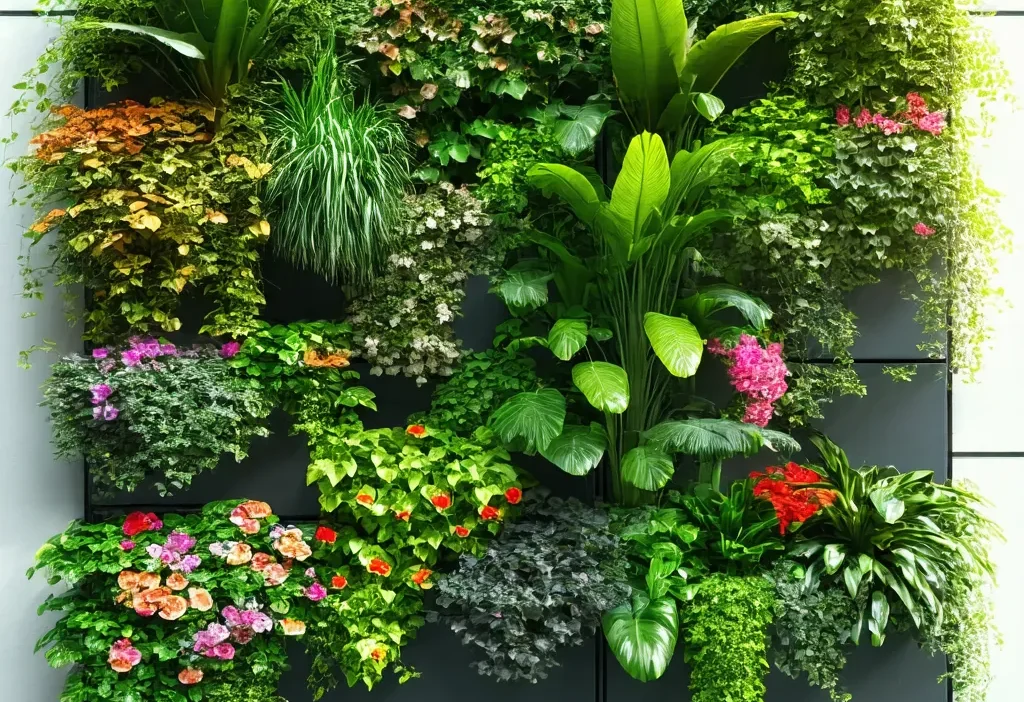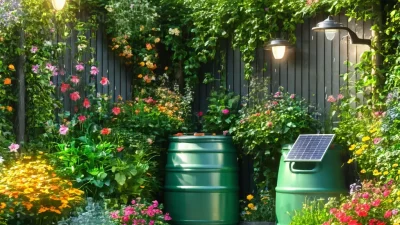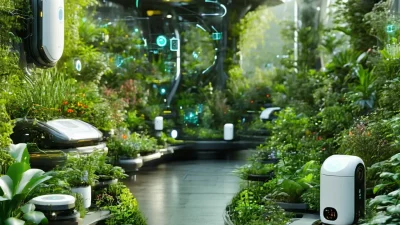The Art of Vertical Gardening: How to Create a Vertical Oasis
Are you ready to transform your outdoor space into a lush, green paradise without needing acres of land? Welcome to the world of vertical gardening, where creativity meets functionality. This innovative approach allows you to grow plants in limited spaces, making it perfect for urban dwellers or anyone looking to maximize their garden potential.
Why Choose Vertical Gardening?
Before diving into the world of vertical gardens, let’s explore why this method is gaining so much popularity:
- Saves Space: Ideal for small balconies, patios, or even indoor spaces.
- Increases Yields: Grow more plants in less area without overcrowding.
- Adds Beauty: Creates stunning green walls that enhance any setting.
- Improves Air Quality: Plants help purify the air, making your space healthier.
Whether you’re a seasoned gardener or just starting out, vertical gardening offers something for everyone. Let’s explore how you can get started and maintain your very own green wall.
Getting Started: Choosing Your System
The first step in creating a vertical garden is selecting the right system. Here are some popular options:
- Freestanding Vertical Planters: These self-contained units allow you to grow plants vertically without attaching anything to a wall.
- Wall-Mounted Systems: Attachable planters that can be installed on fences, walls, or even the side of your house.
- Pocket Planters: A stylish option where plants grow out of fabric pockets attached to a frame.
Your choice will depend on your space, budget, and the types of plants you want to grow. For example, herbs and small vegetables like cherry tomatoes thrive in vertical systems.
Selecting the Right Plants for Your Vertical Garden
Not all plants are created equal when it comes to vertical gardening. Here are some top picks:
- Herbs: Basil, parsley, and thyme are perfect for small spaces and add freshness to your cooking.
- Veggies: Cherry tomatoes, beans, and peppers can be grown vertically with support.
- Fruits: strawberries and small citrus trees can also be accommodated in vertical setups.
- Flowers: nasturtiums, pansies, and petunias add color and beauty to your garden.
Remember to consider the mature size of each plant to avoid overcrowding. Proper spacing is key to healthy growth.
Maintenance Made Easy: Tips for Success
Like any garden, vertical gardens require care and attention. Here are some maintenance tips:
- Watering: Use a watering can or hose with a gentle spray to avoid overwatering.
- Fertilizing: Regularly feed your plants with a balanced liquid fertilizer.
- Pruning: Keep plants in check by pruning as needed for better airflow and growth.
- Inspect for Pests: Check regularly for insects and treat them naturally if found.
Avoid using chemical pesticides, as they can harm beneficial insects and the environment. Instead, opt for organic solutions or introduce ladybugs to keep pests at bay.
Vertical Gardening on a Budget: DIY Options
If you’re looking to save money, consider creating your own vertical garden using repurposed materials. Here’s how:
- Pallets: Turn an old wooden pallet into a planter by attaching pockets or planting directly through drilled holes.
- Cinder Blocks: Stack cinder blocks and drill holes for plants, creating a modern-looking vertical garden.
- Recycled Containers: Use old cans, bottles, or even shoes as creative planters.
Your imagination is the limit! These DIY projects not only save money but also add a unique touch to your garden.
Vertical Gardening in Urban Areas
In cities where space is limited, vertical gardens are a game-changer. They can be installed on building facades, adding greenery and improving air quality. For example:
- Rooftop Gardens: Transform unused rooftop spaces into productive green areas.
- Balcony Gardens: Even a small balcony can support a vertical garden with the right setup.
- Indoor Vertical Gardens: Bring nature indoors using LED lights and hydroponic systems.
Urban gardens also provide fresh produce, reducing reliance on store-bought options and promoting sustainability.
The Environmental Benefits of Vertical Gardening
Beyond aesthetics and productivity, vertical gardening offers significant environmental benefits:
- Carbon Sequestration: Plants absorb CO2, helping combat climate change.
- Reduced Energy Use: Green walls provide natural insulation, lowering heating and cooling needs.
- Biodiversity: Attract pollinators like bees and butterflies to your garden.
- Water Conservation: Some systems use less water than traditional gardens by recycling it efficiently.
By adopting vertical gardening, you contribute to a healthier planet while enjoying the benefits of fresh produce and beautiful surroundings.
Common Mistakes to Avoid
Even experienced gardeners can stumble when starting with vertical gardens. Here are some pitfalls to watch out for:
- Overcrowding Plants: Allow enough space between plants for healthy growth and airflow.
- Inadequate Lighting: Ensure your garden gets sufficient sunlight; most plants need at least 6 hours daily.
- Poor Drainage: Proper drainage is crucial to prevent root rot. Use containers with drainage holes and elevate them if necessary.
- Neglecting Support Structures: Ensure your system can handle the weight of plants, soil, and water over time.
By avoiding these mistakes, you’ll set yourself up for a thriving vertical garden that brings joy and productivity year after year.
Conclusion: Embrace Vertical Gardening Today
If you’re eager to experience the joy of gardening but limited by space, vertical gardening is your answer. This innovative method allows you to grow beautiful, healthy plants while enhancing your living environment and contributing positively to the planet.
So why wait? Start planning your vertical garden today! Whether you choose a simple herb wall or an elaborate green facade, the satisfaction of watching your plants thrive will be rewarding beyond measure. Happy gardening!





